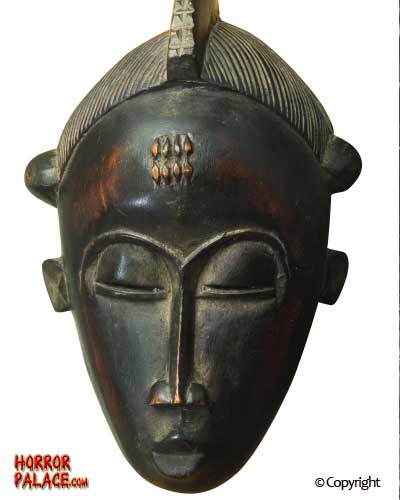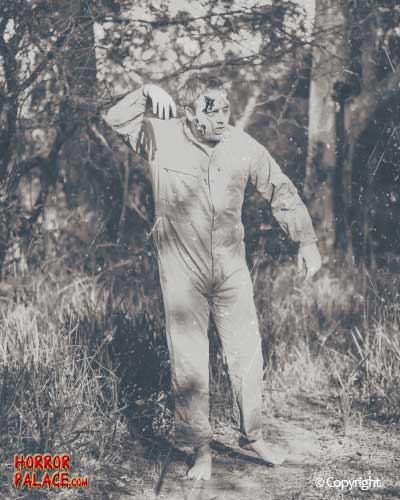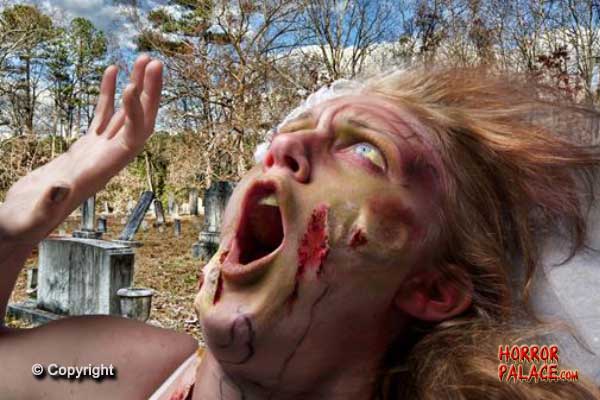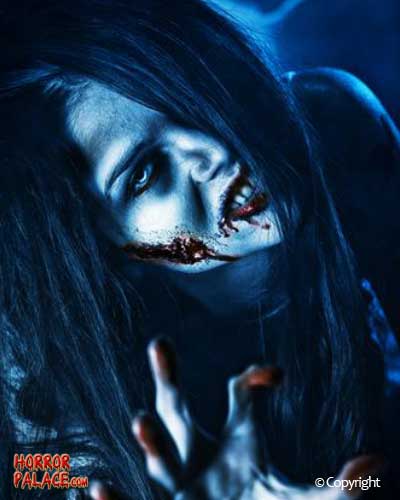 From the deep roots of African culture spawns the legend of the zombie. For many it’s simply a fictional character created by over-enthusiastic writers who searched for new ways to entertain their audience. Little do these people know about the real horror behind its origin. As far as modern society is concerned zombies can either exist through government experiments that go horribly wrong or strange infections that seem to spread from an unknown source. These theories have been the inspiration for a multitude of television shows, books and even music. It has become so popular that the Center of Disease Control and Prevention has built an “apocalypse preparedness” campaign around the possibility of an invasion. If you look past the glamor of Hollywood you will discover the unnerving truth surrounding real zombies and where they come from.
From the deep roots of African culture spawns the legend of the zombie. For many it’s simply a fictional character created by over-enthusiastic writers who searched for new ways to entertain their audience. Little do these people know about the real horror behind its origin. As far as modern society is concerned zombies can either exist through government experiments that go horribly wrong or strange infections that seem to spread from an unknown source. These theories have been the inspiration for a multitude of television shows, books and even music. It has become so popular that the Center of Disease Control and Prevention has built an “apocalypse preparedness” campaign around the possibility of an invasion. If you look past the glamor of Hollywood you will discover the unnerving truth surrounding real zombies and where they come from.
According to the Haiti penal code it’s against the law to poison somebody for the purpose of putting them in a lethargic state. This lethargic state is induced by a magician or witch (bokor), which in turn takes control of the body and makes it perform tasks according to his/her will. The reason why Haiti has this well-known law against “creating zombies” is because it’s where the practice began and still continues. You would be right to assume that Voodoo plays a certain part in this practice; however, it’s not actually part of the religion itself. The term “zombie” comes from “nzambi” and “zumbi”, the former meaning “God” and the latter “fetish”. Both words are derived from the language spoken in Kongo, a country where spiritual power is nothing to laugh about. Even though the idea of zombie creation dominantly comes from Africa, a connection has been  found between the practice and the Taino people, who are indigenous to the island. This comes from the writings of the Hieronymite monk by the name of Ramon Pane. He is better known as a companion of Christopher Columbus.
found between the practice and the Taino people, who are indigenous to the island. This comes from the writings of the Hieronymite monk by the name of Ramon Pane. He is better known as a companion of Christopher Columbus.
By using chemicals such as tetrodoxitin and datura, a bokor is able to put a human in a state where free will doesn’t exist. After these chemicals are in the bloodstream the person is buried until the transformation into a zombie is complete. This was concluded by Wade Davis, a Harvard ethnobotanist, after travelling to Haiti in 1982. The complexities involved in this process are as horrific as they are deadly. UN soldiers who were part of the mission to stabilize Haiti witnessed the gruesome and mutilated bodies in the streets, apparently part of the zombie experiments that failed.
Regardless of the long history and practice, the world only started showing interest in this phenomenon when America occupied Haiti between 1915 and 1934. Accounts of walking zombies reached international waters and the first book to cover this topic was entitled “The Magic Island”. It was published in 1929 and written by William Seabrook. As expected, this opened the doors to greater imagination and multiple theories. A small section of the book was used to promote the movie “White Zombie” in 1932.

And so the zombie craze became the focus point of movies, books and medical studies. Everyone had a theory of their own on how the “disease” can spread. Apart from all the movies that were made zombies reached comic books as can be seen in the “Green Lantern”, a character by the name of Solomon Grundy. This was as early as 1944. Later on the term would be associated with political movements. More specifically, masses who blindly followed government were called zombies. It became a source of inspiration for hit songs and various metaphors. A popular Irish band called “The Cranberries” made record sales with their interpretation of government leaders, and the song was simply entitled “Zombie”.
Zombies ultimately reached the same status as vampires and werewolves. After the media took control of the idea, it was formed to fit into pop-culture. They became cool and hip. They sparked inspiration for Halloween costumes and logos. If somebody acts like a stupid, mindless drone, they are called a zombie. Instead of zombies that simply acted according to the will of their maker, they were now depicted as creatures that had no master. Their purpose was only to feast on the flesh of humans and move onto the next human. In turn, their curse would settle into those they bit or scratched if they didn’t devour their prey completely. Even the source of their creation has gone through hundreds of adaptations. Government conspiracies and mysterious virus outbreaks are some of the popular choices among movie makers these days.
 Some of the latest movies have taken zombies into a different direction, such as “Warm Bodies”. In this film the zombie has thoughts, but is unable to express them. After he falls in love with a girl after eating the brains of her boyfriend, his body starts to change. The increase of human emotion and contact brings his heart back to life. In the end he becomes human again. In some books and films zombies are described as slow and pretty much void of any intelligence, whereas other stories prefer to give them additional strength, speed and some common sense for good measure.
Some of the latest movies have taken zombies into a different direction, such as “Warm Bodies”. In this film the zombie has thoughts, but is unable to express them. After he falls in love with a girl after eating the brains of her boyfriend, his body starts to change. The increase of human emotion and contact brings his heart back to life. In the end he becomes human again. In some books and films zombies are described as slow and pretty much void of any intelligence, whereas other stories prefer to give them additional strength, speed and some common sense for good measure.
The zombie trend has spread from mere witness accounts to artwork and actually managed to reach governments. There is still a debate on whether zombies should pay tax if they ever did join society and Florida wants to pass a bill that all gun laws fall away in case of a zombie apocalypse. This is to say if they can decide if it’s legal to kill a zombie.
For such a mindless, simple creature, it has stirred quite a lot of hype. Keep in mind the next time you watch a zombie movie, read a book or see a picture, their existence isn’t as pleasant as a virus breakout which transforms people without obvious pain. In the true practice of creating a zombie, the body is killed by deadly chemicals pumped into the veins, preferably a wound. This is followed by a burial and resurrection. Another thing to remember is that not all of these transformations are successful. When you think about it, the making of a zombie actually surpasses the horror it brings with it.
You must be logged in to post a comment.